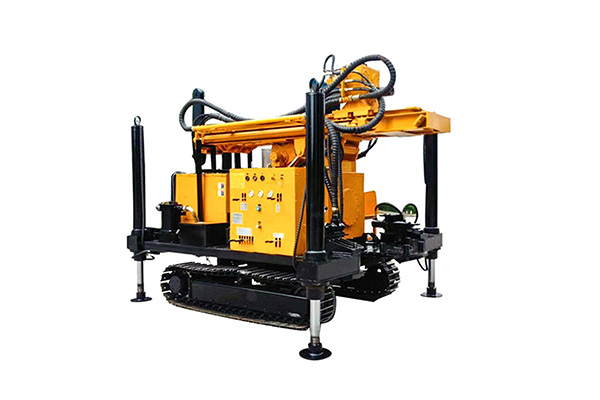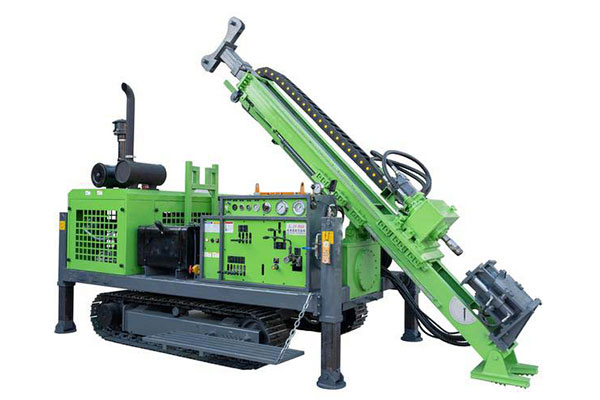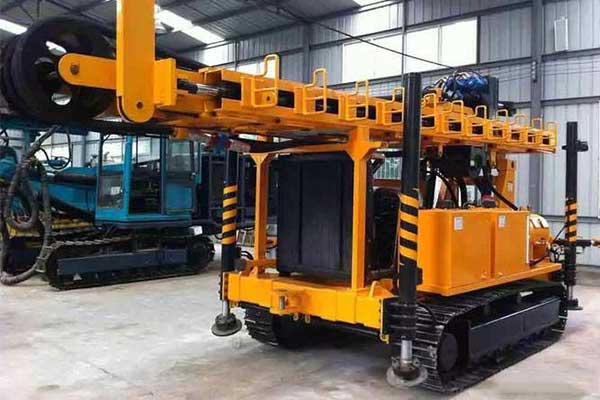Rotary Water Well Drilling Rig: What You Need to Know
Access to clean water is essential for agriculture, domestic use, and industrial applications. A rotary water well drilling rig is one of the most effective tools for drilling deep wells to tap underground water sources. This article explores how rotary drilling rigs work, their key components, advantages, and how to choose the right rig for your needs.

What is a Rotary Water Well Drilling Rig?
A rotary water well drilling rig is a mechanical device used to drill boreholes into the earth’s surface to extract groundwater. It uses a rotating drill bit attached to a drill string, which cuts through soil and rock layers. As the bit rotates, drilling fluid (or mud) is circulated to remove cuttings and cool the bit.
Key Components of a Rotary Water Well Drilling Rig
- Drill Bit – The cutting tool that breaks the ground.
- Drill Pipe – Connects the bit to the rig and circulates drilling fluid.
- Rotary Table or Top Drive – Provides torque to rotate the drill string.
- Derrick or Mast – The tower structure that supports the drilling assembly.
- Power System – Typically diesel-powered engines or electric motors.
How Does a Rotary Drilling Rig Work?
The core of rotary drilling lies in the rotating drill bit, which is powered by an engine and connected through a drill pipe. The drill bit spins rapidly and grinds through the subsurface layers. A drilling fluid, commonly known as mud, is pumped down the drill pipe to lubricate the bit, cool it, and carry cuttings back to the surface.
Here’s a quick stKey Components of a Rotary Water Well Drilling Rigep-by-step overview of the process:
- Rig Setup – The rig is positioned and stabilized on the drilling site.
- Initial Drilling – The rotating drill bit begins to penetrate the ground.
- Circulation of Drilling Mud – Mud is circulated to clean the hole and stabilize the borehole walls.
- Casing Installation – Once a certain depth is reached, casing is inserted to prevent collapse.
- Well Completion – After reaching the desired depth, the well is developed and equipped with a pump or piping system.

Types of Rotary Drilling Rigs
Rotary water well drilling rigs are generally classified into two categories:
- Direct Rotary Drilling Rigs: Use high volumes of drilling fluid to lift cuttings.
- Reverse Circulation (RC) Rotary Rigs: Pull cuttings up through the drill pipe using lower fluid pressure, allowing faster drilling in large-diameter wells.
Advantages of Rotary Drilling Rigs
- Faster Drilling Speed: Capable of drilling hundreds of meters quickly.
- Deeper Penetration: Ideal for deep aquifers.
- Versatility: Can handle various geological conditions.
- Better Borehole Quality: Ensures cleaner, straighter boreholes.
- Scalability: Ideal for both small-scale residential wells and large-scale industrial projects.
Applications of Rotary Water Well Drilling Rigs
- Domestic water wells
- Agricultural irrigation wells
- Industrial water supply
- Municipal and rural water projects
- Geothermal wells

Choosing the Right Rotary Drilling Rig
When selecting a rotary water well drilling rig, consider the following:
- Drilling Depth and Diameter: Ensure the rig can reach your target depth and accommodate casing sizes.
- Geological Conditions: Hard rock vs soft formations may require different rig capabilities.
- Mobility: Choose between truck-mounted, trailer-mounted, or skid-mounted rigs based on accessibility.
- Power Source: Evaluate between diesel or electric depending on availability and cost.
- Budget and Maintenance: Opt for rigs with lower maintenance needs and reliable spare part availability.
Maintenance Tips for Rotary Drilling Rigs
To ensure optimal performance and longevity of your rig:
- Perform regular inspections on all mechanical and hydraulic systems.
- Replace worn-out drill bits and pipes promptly.
- Keep the mud pump system clean and functioning properly.
- Lubricate moving parts frequently.
- Train operators on safe and efficient usage.
Conclusion
A rotary water well drilling rig is an essential tool for efficient and deep water extraction. Whether you’re drilling for agricultural, domestic, or industrial purposes, understanding the rig’s components, benefits, and proper usage ensures a successful project. Investing in the right rig can provide long-term water security and operational efficiency.
Need a reliable rotary drilling rig for your next project? Contact us today to explore high-performance options that suit your drilling needs.

